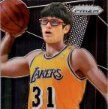But really, what IS Motion?
-
Similar Content
-
- 103 replies
- 7,946 views
-
- 15 replies
- 983 views
-
- 62 replies
- 2,536 views
-
- 20 replies
- 732 views
-
- 11 replies
- 497 views
-
-
Recently Browsing 0 members
- No registered users viewing this page.






Recommended Posts
Join the conversation
You can post now and register later. If you have an account, sign in now to post with your account.